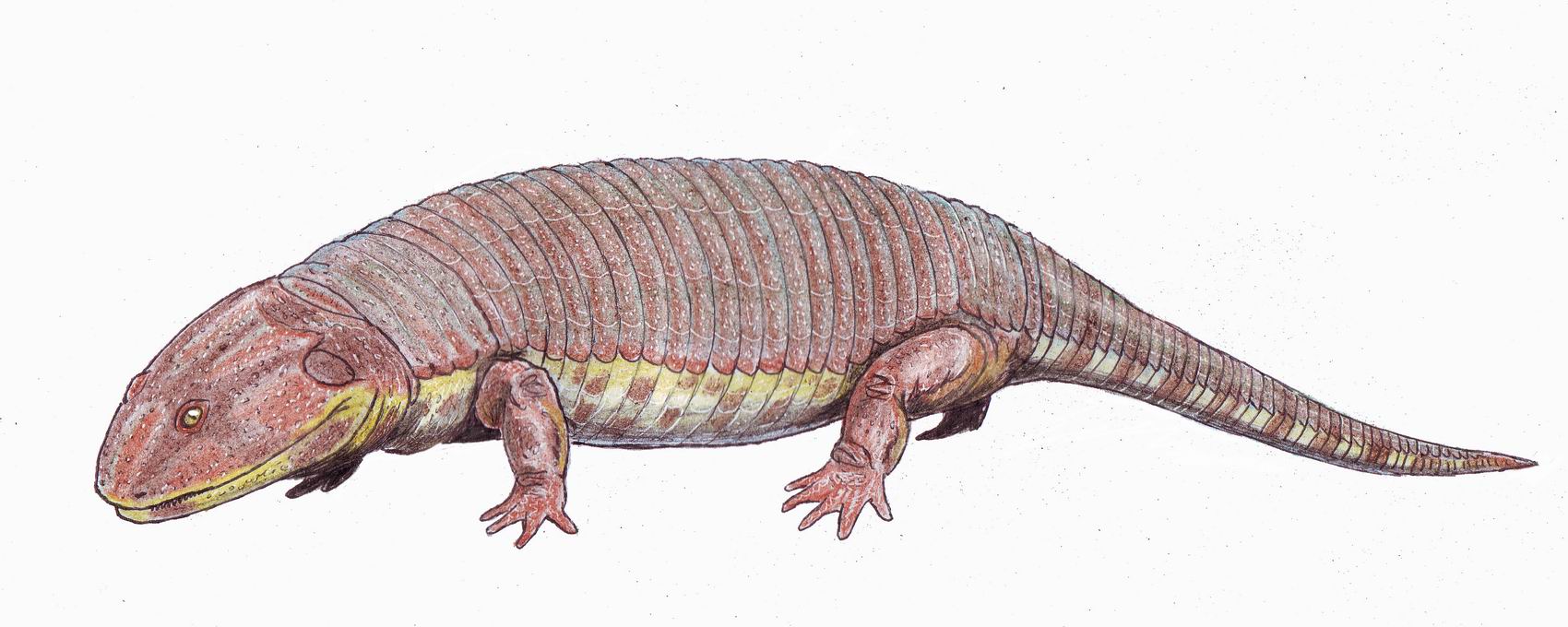Peltobatrachus Pustulatus on:
[Wikipedia]
[Google]
[Amazon]
''Peltobatrachus'' (from Greek ''pelte'', meaning shield and batrakhos, meaning frog) is an extinct genus of 
temnospondyl
Temnospondyli (from Greek language, Greek τέμνειν, ''temnein'' 'to cut' and σπόνδυλος, ''spondylos'' 'vertebra') is a diverse order (biology), order of small to giant tetrapods—often considered Labyrinthodontia, primitive amphi ...
amphibian
Amphibians are tetrapod, four-limbed and ectothermic vertebrates of the Class (biology), class Amphibia. All living amphibians belong to the group Lissamphibia. They inhabit a wide variety of habitats, with most species living within terres ...
from the late Permian
The Permian ( ) is a geologic period and stratigraphic system which spans 47 million years from the end of the Carboniferous Period million years ago (Mya), to the beginning of the Triassic Period 251.9 Mya. It is the last period of the Paleoz ...
period of Tanzania
Tanzania (; ), officially the United Republic of Tanzania ( sw, Jamhuri ya Muungano wa Tanzania), is a country in East Africa within the African Great Lakes region. It borders Uganda to the north; Kenya to the northeast; Comoro Islands and ...
. The sole species, ''Peltobatrachus pustulatus'', is also the sole member of the family Peltobatrachidae.

Description
''Peltobatrachus'' was a large, slow moving animal, up to in length. It was a fullyterrestrial
Terrestrial refers to things related to land or the planet Earth.
Terrestrial may also refer to:
* Terrestrial animal, an animal that lives on land opposed to living in water, or sometimes an animal that lives on or near the ground, as opposed to ...
amphibian, only returning to the water to lay its egg
An egg is an organic vessel grown by an animal to carry a possibly fertilized egg cell (a zygote) and to incubate from it an embryo within the egg until the embryo has become an animal fetus that can survive on its own, at which point the a ...
s.
To protect itself against predators such as the large gorgonopsid
Gorgonopsia (from the Greek Gorgon, a mythological beast, and 'aspect') is an extinct clade of sabre-toothed therapsids from the Middle to Upper Permian roughly 265 to 252 million years ago. They are characterised by a long and narrow skull ...
therapsid
Therapsida is a major group of eupelycosaurian synapsids that includes mammals, their ancestors and relatives. Many of the traits today seen as unique to mammals had their origin within early therapsids, including limbs that were oriented more ...
s, it had developed an armadillo
Armadillos (meaning "little armored ones" in Spanish) are New World placental mammals in the order Cingulata. The Chlamyphoridae and Dasypodidae are the only surviving families in the order, which is part of the superorder Xenarthra, along wi ...
-like armored plating covering its body and tail. The armor consisted of broad plates on the shoulders and hips and narrower plates on the rest of the body. Although no teeth of the creature have been found, it probably fed on insect
Insects (from Latin ') are pancrustacean hexapod invertebrates of the class Insecta. They are the largest group within the arthropod phylum. Insects have a chitinous exoskeleton, a three-part body ( head, thorax and abdomen), three pairs ...
s, worm
Worms are many different distantly related bilateral animals that typically have a long cylindrical tube-like body, no limbs, and no eyes (though not always).
Worms vary in size from microscopic to over in length for marine polychaete wo ...
s, and snail
A snail is, in loose terms, a shelled gastropod. The name is most often applied to land snails, terrestrial pulmonate gastropod molluscs. However, the common name ''snail'' is also used for most of the members of the molluscan class G ...
s.
References
Further reading
* Permian temnospondyls Lopingian life Permian amphibians of Africa Permian Tanzania Fossils of Tanzania Fossil taxa described in 1959 {{temnospondyli-stub